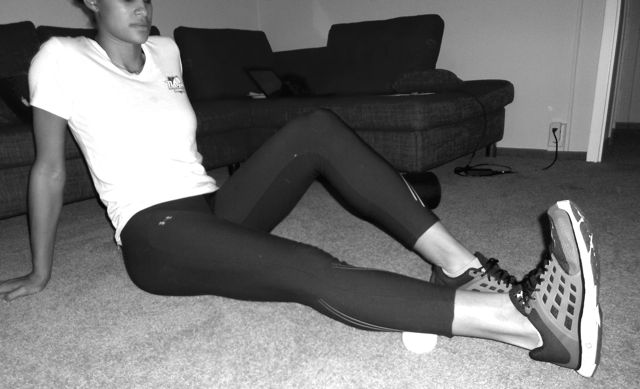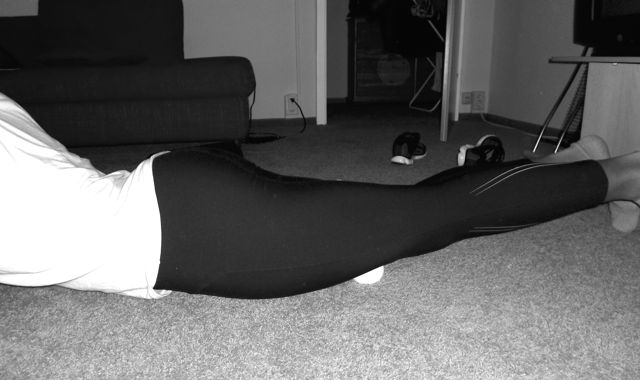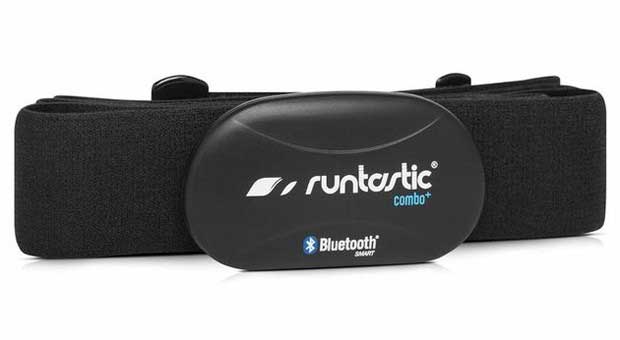Massage with a Tennis Ball: Unlock Muscle Relief and Relaxation

ListedFit is reader-supported. When you buy through links on our site, we may earn a small commission.
Are you tired of dealing with muscle tension and tight spots that just won’t go away? Don’t worry! You can give yourself a massage without having to pay a visit to a professional, using a simple tool you might already have lying around: a tennis ball. This cost-effective, DIY approach to self-massage can help you release muscle knots and improve your overall mobility, all from the comfort of your own home.
Incorporating tennis ball massage into your self-care routine can target hard-to-reach areas, especially in the muscles of the back and the hips. By placing the ball between your body and a firm surface like the floor or wall, you can effectively knead and release tension in problem areas. Combining self-massage with stretching can enhance the benefits, further increasing circulation, and re-educating your muscles to rest at a more comfortable length.
If you’re ready to take matters into your own hands and experience the benefits of tennis ball massage, follow these expert tips and techniques. Working on your tight muscles in this way can lead to better flexibility, reduced pain, and a healthier, more comfortable body.
If you’re ready to take matters into your own hands and experience the benefits of tennis ball massage, follow these expert tips and techniques.
Working on your tight muscles in this way can lead to better flexibility, reduced pain, and a healthier, more comfortable body.
Table of Contents
Benefits of Massage with a Tennis Ball
Using a tennis ball for massage can provide a number of benefits for your muscles and overall well-being. Here are a few key advantages to incorporating tennis ball massage into your routine:
Targeted Muscle Relief: By applying specific pressure to stiff or aching spots in your muscles, a tennis ball can pinpoint and alleviate discomfort. This method can be particularly helpful for targeting hard-to-reach areas, such as the hips and glutes.
Increased Circulation: Massaging your muscles with a tennis ball can help improve blood flow, which in turn enables oxygen and other vital nutrients to reach your muscles, tissues, and organs more effectively. This can aid in muscle recovery and overall health.
Reduced Foot Pain and Stress: Utilizing a tennis ball to massage your feet can offer stress relief and reduce foot pain. Additionally, some believe that massaging the feet also supports various organs in the body, as it accesses reflexology zones.
Cost-Effective and Convenient: Tennis ball massage is an affordable and convenient way to achieve muscle relief. You can easily fit a tennis ball in your gym bag or suitcase, giving you the tools to relieve muscle tension and pain wherever you go.
Incorporating tennis ball massage into your self-care routine can help you experience these benefits and more. So, consider giving this technique a try and see how it benefits your muscles, joints, and overall well-being.
Anatomy and Key Pressure Points
Hit Those Trigger Points and Tight Muscles
You may have heard of these nasty little things if you have visited a massage therapist. They are specific points in the muscle that are overactive and won’t release from their contracted state. More commonly known as a muscle knot. They cause pain in the area they occupy, as well as refer pain to other muscles and joints.
With a little understanding and action, you can get rid of your trigger points and a lot of pain that you suffer from by getting friendly with your tennis ball. Quite often joint pain that you suffer from comes from trigger points and tight muscles. Not only will the point directly refer pain, but the tight muscles will work against your body’s natural movement patterns and cause some imbalances that ultimately lead to painful problems.
Not only can you attack many types of muscular and joint pain you suffer from, but using a tennis ball in your recovery routine is vital. You can release your muscles, recover faster, prevent pain, and most importantly hit your next workout harder and more efficiently. The best way to adapt better and reach your goals faster is to
How To Get All Those Amazing Benefits
Let’s start by looking at the knee. A lot of people suffer from knee pain. Whether you have trigger points in surrounding muscles, or imbalances are causing you biomechanical problems, using a tennis ball to massage the right areas will help you relieve your pain. We need to look closely at the quadriceps muscles and the calf muscles. Trigger points in the calf often refer to the knee and cause pain. Likewise, tight points and muscle imbalances in the quadriceps put extra pressure on the knee.
Upper Body
Tennis ball massage can effectively target the key pressure points in your upper body, helping you to alleviate muscle tension and discomfort. Focusing on areas like your neck, shoulders, and upper back, you can use the tennis ball to apply firm, consistent pressure to the knots in your muscles.
To massage your shoulders, position a tennis ball between your shoulder blade and spine. Lean against a wall, applying gentle pressure and slowly rolling the ball up and down until you find a tender spot. Hold this position for 30 seconds or until you feel the tension begin to release.
For your neck, place the tennis ball at the base of your skull and lean against a wall. Gently move your head side to side, allowing the ball to roll along your neck muscles. Spend 30 seconds on each side to help release tension and ease any discomfort.
Lower Body
Your lower body also contains important pressure points that can be effectively addressed using a tennis ball for self-massage. Key areas to focus on include your hips, buttocks, hamstrings, and calves.
To target your hips and buttocks, sit on the tennis ball and locate a tender area in your glute muscles. Maintain pressure on the spot for 30 seconds or until you feel the muscle softening. Repeat on the other side.
For your hamstrings and calves, place the tennis ball under the back of your leg while sitting on a stable surface. Roll the ball up and down, applying pressure as needed. When you find a tight spot, hold the position for 30 seconds or until you experience relief.
Remember to keep the pressure controlled and comfortable. The goal of tennis ball massage is to achieve a feeling of release or softening in the targeted muscles. By focusing on these key pressure points in your upper and lower body, you can effectively reduce muscle tension and promote overall muscle health.
Types of Tennis Ball Massages
There are different ways you can use a tennis ball to relieve muscle tension and pain. This section covers two main categories of tennis ball massages: self-massage techniques and assisted massage techniques.
Self-Massage Techniques
- Back Massage: Place the tennis ball on the desired spot on your back, and ease your weight into the ball until it is comfortably wedged between you and the wall. Lower your body up and down or shift your body from side to side to allow the ball to knead the focus area.
- Neck Pain Relief: Gently roll the tennis ball over your neck muscles, applying just enough pressure for comfort. Move slowly and focus on tight spots, allowing the ball to work its way into the muscle.
- Foot Massage: Sit in a chair, keeping your back straight, and place the tennis ball under one of your feet. Gently roll the ball back and forth, applying pressure as needed to work out any tension or tightness in your foot muscles.
Assisted Massage Techniques
- Partner Back Massage: For this technique, you will need a partner to help you. Lie facedown on a firm surface, such as the floor, with the tennis ball positioned under the desired muscles. Your partner will then place their hands on your back and use their body weight to apply pressure and work the tennis ball over the focus area.
- Trigger Point Release: Identify any trigger points or tight knots in your muscles and have your partner place the tennis ball on the area. By applying steady pressure to the trigger point with the tennis ball, the muscle tension will begin to release, providing relief and increased mobility.
Remember to practice these tennis ball massage techniques regularly to maintain muscle flexibility and prevent the build-up of tension. Always listen to your body and adjust the pressure applied to ensure that you don’t cause unnecessary discomfort or strain.
Common Issues Addressed with Tennis Ball Massage
Tennis ball massage is an effective and inexpensive method for addressing common muscle pain and discomfort. This technique can provide relief for a variety of issues. In this section, we will discuss three common issues that can be addressed using tennis ball massage: Myofascial Release, Plantar Fasciitis, and Piriformis Syndrome.
Myofascial Release
Myofascial release is a technique that helps to release tension and tightness in the fascia, the connective tissue surrounding your muscles. A tennis ball can be an effective tool for performing myofascial release. By applying gentle pressure to a tight or sore muscle, you can help break up adhesions and improve blood flow to the area. To perform this technique, place the tennis ball on the floor and position your body so that the muscle you want to target is resting on the ball. Slowly move your body, allowing the ball to massage and release tension in the muscle. Make sure to listen to your body and avoid applying too much pressure to avoid bruising or discomfort.
Plantar Fasciitis
Plantar fasciitis is a common condition that causes pain and inflammation in the plantar fascia, the thick band of tissue that connects your heel to your toes. Tennis ball massage can be beneficial for those suffering from plantar fasciitis, as it helps to loosen the tight fascia and provide relief from pain. To perform this massage, sit or stand and place your foot onto the tennis ball. Roll the ball along the arch of your foot, applying pressure as needed. Spend a few minutes on each foot and perform this exercise regularly to help alleviate symptoms and improve foot flexibility.
Piriformis Syndrome
Piriformis syndrome is a condition that occurs when the piriformis muscle, located in the buttock area, becomes tight or spasms, causing pain and discomfort. This tightness can also irritate the sciatic nerve, leading to sciatica-like symptoms. Tennis ball massage can help in releasing tension and relaxing the piriformis muscle. To perform this massage, sit on the floor with your legs bent and feet flat on the ground. Place the tennis ball under the buttock on the side you’re experiencing discomfort, and slowly adjust your position so that the ball is pressing into the piriformis muscle. Gently shift your weight on the ball, allowing it to massage and release the muscle tension. Aim to spend a few minutes on each side, and repeat this exercise regularly for optimal results.
By incorporating tennis ball massage into your self-care routine, you can effectively address common issues such as myofascial tension, plantar fasciitis, and piriformis syndrome. Remember to listen to your body and adjust the pressure and duration of the massage to meet your individual needs and goals.
Tennis Ball Massage: Ball Calf Release
Sit down on the floor with your leg extended. Place the tennis ball under your leg near your ankle. Slowly roll up the length of the muscle and stop on any tight or sore spots.
Hold them for 30 seconds or until you feel a release. Run the full length of the muscle right up to behind your knee and repeat the same process when you find tight areas.

Tennis Ball Massage: Quad Release
Lie on your front, with the tennis ball placed close to your knee in the center of your thigh. To explore this muscle you should roll up and down the length of the quadriceps slowly. If you feel a tight spot stop and pay extra attention to it.
Ensure that you continue breathing, and hold that spot for 30 seconds or until you feel a release.
Continue up the muscle. For extra work on a point, you can bend the leg and take the joint through its range of motion slowly.


Preparing a Space and Precautions
Before beginning your tennis ball massage session, it is important to prepare a suitable space. Start by finding a location with enough room to move comfortably. This can be a spacious part of your living room, bedroom, or even an open area outdoors if the weather permits. Ensure the area is free from any clutter, sharp objects, and distractions that may interrupt your session.
Next, prepare the surface on which you will be performing the massage. Lay down a yoga mat or a soft, non-slippery surface to provide adequate cushioning and support. This will help in avoiding any discomfort or pain while applying pressure to your muscles during the massage.
When it comes to using a tennis ball for massages, safety should always be a priority. Here are a few precautions to keep in mind:
- Check the ball’s condition: Inspect the tennis ball for any tears, cracks, or other deformities that could potentially cause harm during the massage. Replace it if necessary with a new, smooth tennis ball to ensure the most effective results.
- Avoid massaging injured areas: In case of an existing injury or inflammation, consult a medical professional before attempting any self-massage with a tennis ball. Applying pressure to injured areas may exacerbate the issue.
- Properly warm up: It is important to properly warm up your muscles before beginning your massage session. Engage in a light activity for a few minutes to increase blood circulation and reduce the risk of injury while performing the massage.
- Moderate pressure: Always begin by applying gentle pressure and gradually increase as needed. It is crucial to listen to your body and stop if you experience any sharp or severe pain during the massage session.
- Maintain proper breathing: While massaging, remember to breathe deeply and consistently. Proper breathing helps to relax your muscles, allowing the tennis ball to effectively work on target areas.
By carefully preparing your space and following these safety precautions, you will be ready to experience the benefits of tennis ball massage while minimizing any potential risks.
Aftercare and Consistency
Incorporating a tennis ball massage into your regular self-care routine can make a significant difference in your muscle recovery and overall muscular health. After each session, it is essential to focus on proper aftercare and maintain consistency in your practice.
Following a tennis ball massage, always remember to gently stretch the massaged areas to release any residual tension and promote flexibility. It is also vital to stay hydrated, as this helps to flush out toxins that may have been released during the massage.
In order to see the best results, aim to perform the tennis ball self-massage regularly, ideally on a daily basis or, if not possible, at least three times per week. Be patient as you work on each trigger point, holding it for 30 seconds before releasing and moving to the next area. Slow and controlled movements are key to effectively targeting and relieving muscle knots.
As you grow more comfortable with the technique, adjust the pressure applied on the ball to cater to your personal preferences and ensure that you reach your desired level of relief. Avoid applying excessive pressure or over-massaging an area, as doing so may lead to bruising or increased soreness.
Remember that consistency is the key to experiencing the long-term benefits of incorporating tennis ball self-massages into your wellness routine. By giving your body the attention it needs, you can potentially reduce chronic aches, pains, and discomfort that may have become part of your everyday life. As a result, you’ll be able to perform better physically, mentally, and emotionally in your day-to-day activities.
Frequently Asked Questions
How does a tennis ball help release muscle knots?
A tennis ball can effectively help release muscle knots by applying targeted pressure to the stiff or aching spot in the muscle.
When you place the tennis ball between your body and a surface, such as the floor or a wall, it creates pressure that can break up adhesions or “knots” in the muscles, promoting relaxation and increased flexibility.
What are the benefits of using a tennis ball for back pain?
Using a tennis ball for back pain can provide several benefits, including:
Targeted relief: By placing the tennis ball directly on a sore spot, you can apply focused pressure to relieve tension.
Improved circulation: The pressure from the tennis ball can help stimulate blood flow, which allows nutrients and oxygen to reach the affected area more effectively.
Cost-effective: A tennis ball is an affordable alternative to more expensive therapy tools like massage balls or foam rollers.
Convenience: Tennis balls can be used at home, at work, or while traveling, making it easy to integrate this self-massage technique into your daily routine.
How can tennis ball therapy assist with sciatica relief?
Tennis ball therapy can help alleviate sciatica pain by applying pressure to the piriformis muscle, which is often responsible for sciatic discomfort.
By placing a tennis ball under the buttocks and applying gentle pressure while rolling the ball back and forth, you can release tightness in the piriformis muscle and reduce the pressure on the sciatic nerve.
What are the differences between a tennis ball and a massage ball?
A tennis ball and a massage ball have some fundamental differences:
Material: A tennis ball is made of a rubber core covered in felt, while massage balls are typically made from dense rubber or foam.
Firmness: Massage balls are often firmer than tennis balls, allowing for more intense pressure and deeper massage.
Size and shape: Massage balls come in various sizes and shapes designed for specific applications or body parts, while tennis balls have a standard size and shape.
How do you use a tennis ball for foot massage?
To use a tennis ball for a foot massage, follow these steps:
1. Sit down in a comfortable chair with your feet flat on the floor.
2. Place the tennis ball under one foot, positioning it under the arch or any sore spot.
3. Apply gentle pressure by pressing your foot down onto the ball.
4. Roll the ball back and forth, creating a massaging motion.
5. Repeat this process for a few minutes, and then switch to the other foot.
Can you use a tennis ball for deep-tissue massage?
Yes, a tennis ball can be used for deep-tissue massage, though it may not be as effective as a firmer massage tool. To achieve a deep-tissue effect with a tennis ball, you’ll need to apply more pressure when rolling it over tight muscles or knots.
But you have to remember that excessive pressure can cause discomfort or injury, so always listen to your body and adjust accordingly
Author
Latest entries
 GearJuly 20, 2024Headphones and Earbuds – Tried and Tested!
GearJuly 20, 2024Headphones and Earbuds – Tried and Tested! FitnessAugust 19, 2023Yohimbe vs Yohimbine: A Quick Comparison Guide
FitnessAugust 19, 2023Yohimbe vs Yohimbine: A Quick Comparison Guide AshwagandhaJune 16, 2023Is Ashwagandha Good for Working Out? Key Benefits Explored
AshwagandhaJune 16, 2023Is Ashwagandha Good for Working Out? Key Benefits Explored Sports HeadphonesMay 25, 2023Why Your EarBuds Keep Falling Out – Quick and Easy Solutions
Sports HeadphonesMay 25, 2023Why Your EarBuds Keep Falling Out – Quick and Easy Solutions
Affiliates:
This post may contain affiliate links that at no additional cost to you, the site may earn a small commission. We only recommend products we would use ourselves and all opinions expressed on this site are our own.
General Advice:
The information provided in this article is for general informational purposes only. It is not intended as a substitute for professional advice. Always consult with a qualified healthcare professional before starting any new diet, exercise program, or making changes to your health routine.
Accuracy Advice:
While we strive to provide up-to-date and accurate information, the content in this article may not reflect the most current research or medical guidelines. We encourage readers to do further research and consult with professionals for more personalized advice.
Our Recommendations:
The products and services mentioned in any of our articles are recommended based on our independent research and personal experience. We are not sponsored by any company. We aim to suggest products and services we believe are of high quality and could be beneficial to our readers.






